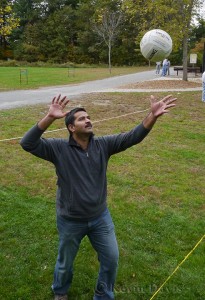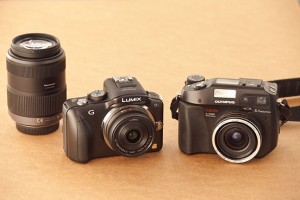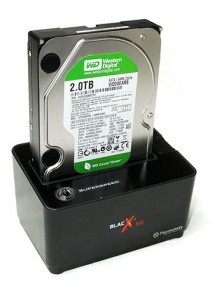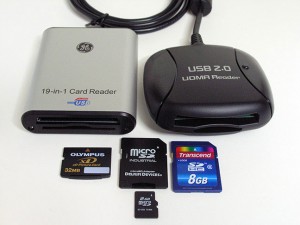You can find tripods in any department store that sells cameras. You might find a good tripod, though perhaps the odds are against you. You can find tripods in any specialty camera store; these are a bit different than the department store variety and they can be far more expensive.
A couple years ago, I went hunting for a good tripod around $100; here is what I found.
There is one quality that a tripod must have above all else; it must be sturdy. While this might seem a good opportunity to denegrate a lot of department store tripods, I am not going to to that. Why? Because “sturdy” means one thing if your camera weighs 10 lbs and means something quite different if your camera weighs 10 oz. A tripod of the department store variety is typically intended for lightweight cameras. For the intended camera, some of these tripods can be quite sturdy, while others simply defy the notion of “sturdy” no matter the camera. Decades ago, my first tripod could be readily described as flimsy; the parts were not fitted together with any precision to prevent the parts from moving about. Without comparing it to other tripods, I knew no better. Of course, there is an argument to be made that any tripod is better than no tripod at all.
The second quality I look for in a tripod is good control of the camera movement. Camera movement is a funciton of the tripod head, as opposed to the tripod legs. The two most common types of tripod heads are the ballhead and the tilt & pan head. Tilt & pan heads are often referred to as video heads because they are particularly useful for video cameras. These heads have long handles attached so you can pan and tilt the camera very smoothly without jerky motion. Ballheads are more compact, basically a ball and socket with one knob that loosens/tightens it. Loosen it and the ball can move in any direction, forward, backward, side to side. A good quality ballhead will have a tension adjustment to prevent the camera from suddenly falling to one side when you loosen the ball. A bigger ball will support a heavier camera compared to a smaller ball. A bigger ball will move more smoothly than a smaller ball. A bigger ball usually has a bigger price tag.
Good tripods are often sold in two separate pieces, the head and the legs. The connection point between the two is a simple screw afixed into the top of the legs. While European tripods may use a different standard, there are two english measurment standards for tripod screw mounts, 1/4 inch and 3/8 inch. If you buy the head and legs separately, just make certain that the mount is compatible. Some tripods sold with both legs with head actually have a detachable head, which gives you the option of upgrading the parts later. Simply be aware of which screw size is used. If it has a 1/4 screw mount, that does not necessarily mean you cannot use a tripod head with 3/8 screw mount. You can employ a 1/4 to 3/8 adapter. However, a set of legs with 1/4 screw mount is intended for smaller cameras; I recommend that you don’t put a 10 lb camera on a set of legs that is not designed for that much weight.
For hundreds of years, tripod legs have been made from wood and these are still available today. However, most legs today are made from aluminum. Innovations over the past 10 years have led to the use of other materials such as carbon fiber. Regardless of the material used, most tripods are adjustable in size for simple reason of portability. A common design consists of sections of tubing that fit within each other like a telescope. When the legs are completely stowed, the tripod has a minum height. This measurement is important for reasons of portability, particularly if you intend to carry your tripod onto an airplane. Fully extended, each tripod has a maximum height. Most people will want a tripod that is tall enough such that you need not bend over to look through your camera’s view finder. Two tripods with the same maximum height may have very different minimum height. In particular, if the tripod legs are each comprised of four sections, this will typically collapse to a size that is significantly smaller than tripod legs having only three sections or two sections.
So here was my task; find a good tripod, not too expensive, nothing too fancy, too heavy or too expensive. Considering the particular photographer, this would be her first tripod; while I insist upon a quality product, I didn’t want to spend hundreds of dollars.
From my own experience, Gitzo tripods are superb. Unfotunately, the cost was a higher than I was intending to spend.
One of the most respected names in tripods is Manfrotto. Manfrotto model 190 was just the right size, with easy-to-use lever locks to extend the legs, 3 leg sections. Legs adjust to 4 different angles and will drop flat to the ground (for ground level photography) with use of a piece (included) that acts as a center-column replacement. Leg tubes are somewhat triangular, stronger than simple round tube. Cost is $125 with no head. Adding the cost of a separate tripod head, this was not inexpensive.
Manfrotto did offer less expensive tripods but they all seem to include a permanently attached head and are rated to support only 2-4 lbs. This might be acceptable for the particular photographer I was shopping for, but I felt that it was a undesirable compromise for anyone using an SLR camera.
You will find Slik tripods in department stores as well as specialty camera stores. Slik model 330 and 340 seemed pretty good, but I felt that the leg-locking levers are too small / under-designed. The model 500 corrects this, but is a significantly larger tripod. Levers are better on Calumet. I believe the included head is removable/replacable.
Giotto has been offering tripod products for a few years; a relative newcomer compared to Manfrotto and Slick. Excellent quality. Better legs than Calumet. However, legs are extended using a twist lock similar to Gitzo and I think lever locks better for a new photographer. Furthermore, each takes 3 turns to lock/unlock, whereas Gitzo is only 2 turns. Extending the Giotto is tedious.
Giotto ballheads, purchased separately, were also very good quality; includes tension adjust. Hoever, the ballhead cost $90 without quick-release and $120 with quick-release; so the combined cost of the legs plus the head was a bit too much.
Tilt-all has made photography products for decades. Unfortunately, the tripods I saw were unacceptable. Every part had a cheap finish and the twist-locks on the legs were lousy.
Induro tripods looked interesting on-line, but I could not find these products in any local stores.
In the end, I found a clear winner … Calumet. Similar to the Manfrotto 190, but the legs were constructed from cheaper thin-wall round-tube aluminum. Legs were locked/unlocked via easy-to-use lever locks. Four leg sections instead three (so collapses smaller). Legs adjust to 3 different angles. Though the center column prevents it from going flat to the ground, the bottom half of the center column can be removed or the entire column can be inverted. Includes a pan-tilt head with quick-release; and the head can be replaced with a good ball head (1/4 inch thread). Three year warranty. Cost $50, wow! I would have expected $90. I bought it.
In a later post, we’ll take a closer look at ballheads.
 Shown here is my favorite shot, Balasankar dishing up a nice overhand serve. As you can probably guess, I am holding the G3 over my head for this shot. An articulated/swivel display screen is very helpful for overhead shots and also down-on-the-ground shots. I quickly learned to love this feature on the C-5060 (very few cameras had this feature back in 2004/5) and I absolutely required it for a replacement camera. The 3-inch swivel-touch-display on the G3 is a sweet upgrade.
Shown here is my favorite shot, Balasankar dishing up a nice overhand serve. As you can probably guess, I am holding the G3 over my head for this shot. An articulated/swivel display screen is very helpful for overhead shots and also down-on-the-ground shots. I quickly learned to love this feature on the C-5060 (very few cameras had this feature back in 2004/5) and I absolutely required it for a replacement camera. The 3-inch swivel-touch-display on the G3 is a sweet upgrade.




